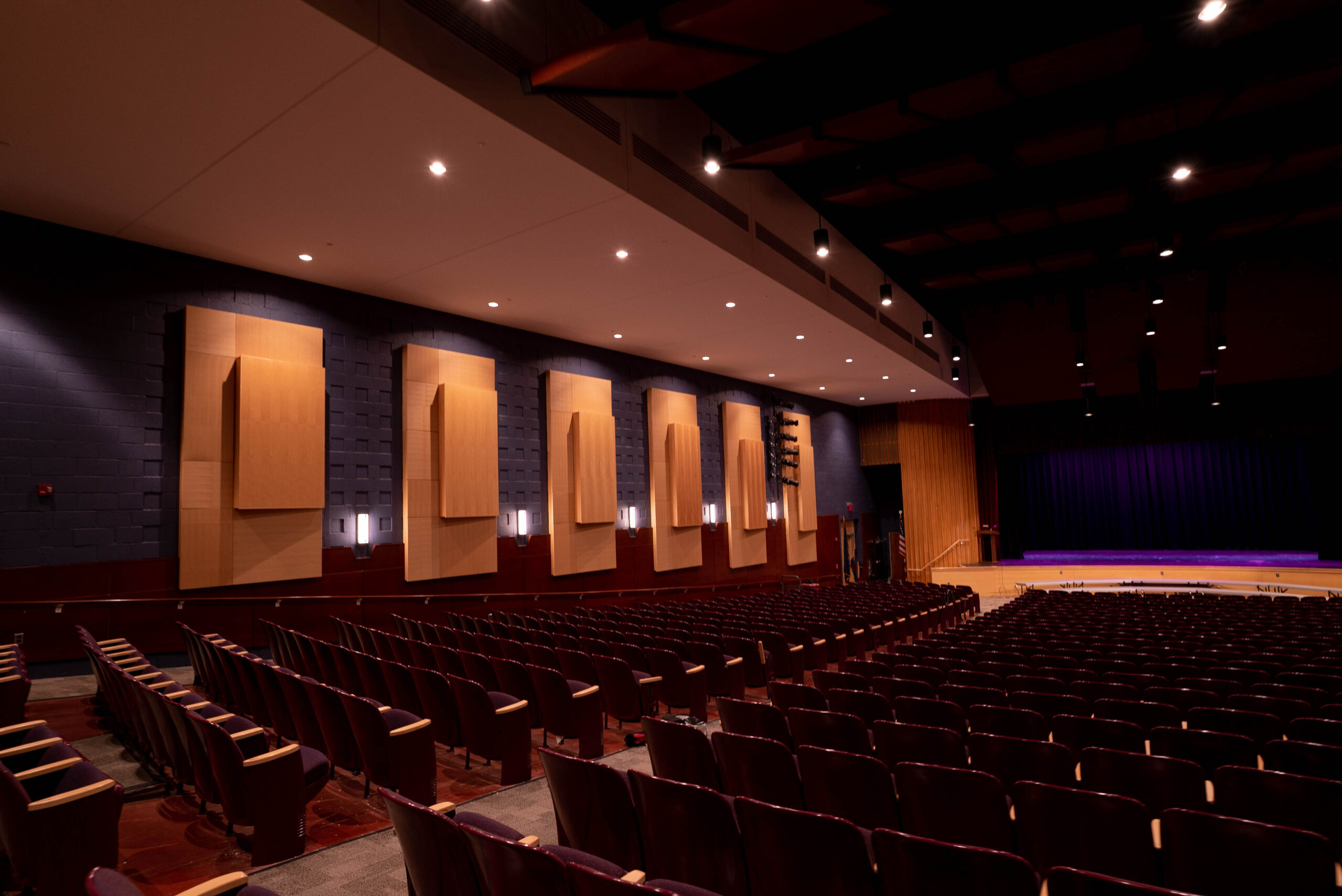
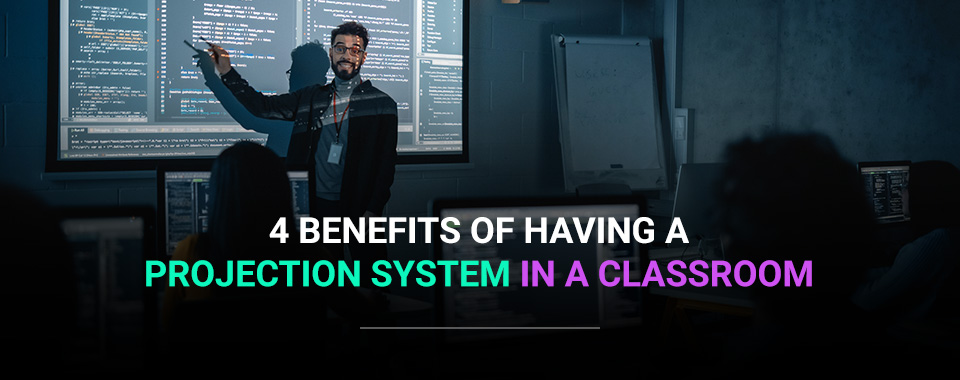
If you’re searching for new equipment to upgrade your school’s classrooms, you have numerous options to consider. In particular, liquid-crystal display (LCD) projectors are powerful pieces of equipment that can benefit students and teachers in several ways. With many classroom and schoolwide applications, your school can make good use of your investment.
Knowing the benefits of LCD projectors can help you understand why they’re a wise choice for students and teachers. Below are four distinct reasons why overhead projectors can transform the learning experience at your school:
Teachers are always trying new techniques to teach their students better and cater to various learning styles. Each student has a unique way of learning, making it tricky for teachers to accommodate each individual in the classroom when they have a set curriculum they need to meet.
Projectors can help teachers better meet the needs of their students by displaying information differently. Like with chalkboards and whiteboards, teachers can still provide visual aids to accompany their verbal points. However, they can also add images and videos, helping further clarify new or unfamiliar concepts across disciplines.
Auditory learners can still listen to lectures, but they have learning opportunities with the extra content teachers can share on projectors. Teachers can help their students learn through music, movies, video clips and expert lectures. For example, language teachers can play music in the classroom while projecting the lyrics onto the screen, helping connect sounds and vocabulary for stronger language skills.
Pairing an education projector with a touch screen is a great way to keep kinesthetic learners engaged. Students can have a hands-on experience with concepts, problems and activities they have to solve or complete on the board. Elementary school teachers can keep energetic students engaged by creating activities and games students can volunteer to do in front of the class.
Projectors can help engage students with different learning speeds, as well. It can be challenging for slower learners to keep up in classes when their teachers move too quickly. They might miss vital points, setting them back. With projectors, teachers can return to slides in presentations or replay parts of videos, so slower learners can receive all the information they need to do well in their classes without holding the faster learners back.
Teachers spend lots of time on lesson planning and outlining their lectures. They need to ensure they’re covering all the information students need to do well on tests. While notes can help teachers organize their thoughts, PowerPoint presentations can help teachers visualize and display all essential information. They can group them into bulleted lists and use bolding, italics, underlining and different colors to highlight more critical concepts.
This kind of system can help teachers ensure they remember everything they need to teach their students. Teachers can reduce the impact distractions have on their lessons. When leading from memory, questions might derail their train of thought, causing them to skip or forget vital information. With a projector, they can see exactly where they left off while still listening and meeting their students’ needs.
Projectors and the use of prepared lesson materials mean more efficient teaching. When teachers have PowerPoints ready, they can save time writing and erasing information by simply clicking through. They’ll have more time to set a slower pace for students, answer questions or incorporate alternative learning opportunities, like videos and activities. Projectors can help create more time-efficient classrooms where students learn more in the allotted time.
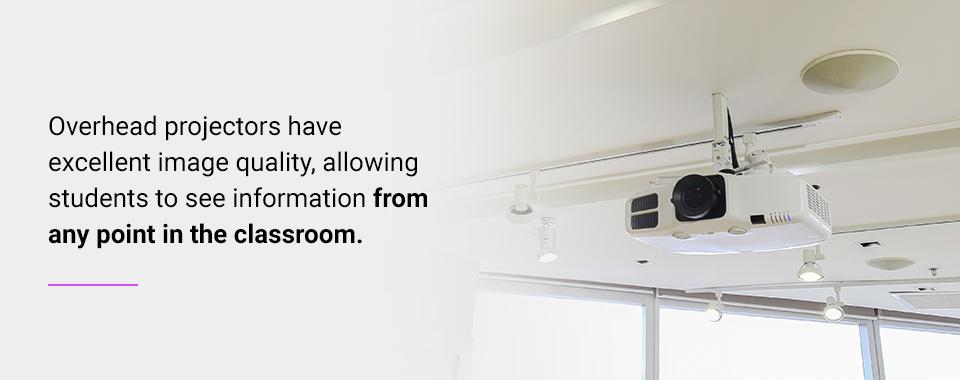
Depending on the school district and zoning, schools have varying classroom sizes. Some teachers might have small classrooms, while others have many students to accommodate. A projector is already an excellent tool for any classroom — you can attach it to the ceiling and teachers can operate it from their desks. Projectors require little additional configuration or movement, making them helpful for classrooms of all sizes.
Overhead projectors also have excellent image quality, allowing students to see information from any point in the classroom. This capacity can help teachers effectively instruct bigger classes, keeping students in the back of the room engaged. It can also help students with poor eyesight, so they can always see the materials.
However, projectors can benefit schools beyond the classroom. You can use them during events when teachers have to address large crowds of parents, ensuring everyone can see them regardless of where they’re seated. Overhead projectors can turn auditoriums or gyms into spaces where faculty and administrative teams can effectively relay information to large groups of attendees.
Many schools lack the resources and tools they need to teach at an advanced level. Without the proper assistance, they might have to stick to the basics or required subjects and concepts without delving into real-world applications.
Investments like overhead projectors can help schools expand their curriculum. Projectors help students explore more topics together as a class, where teachers can share information with larger groups simultaneously. Some ways projectors can help students expand their knowledge include:
A deeper understanding of concepts can also change how students interact with the subject matter. Students may have more questions, showing they’re paying attention throughout the class. Students might also spark discussions about concepts, representing that they feel comfortable enough with the subjects to form opinions on them.
These kinds of opportunities are essential for introducing students to potential careers and passions. When students explore subjects they like, they’re more invested in their education. Further, they can form more goals for their future, striving for higher grades to pursue secondary education or follow a specific career path.
The use of projectors in schools is far-reaching. They have many individual functions, but their primary purpose is to aid and support lessons. Discovering ways you can use your projects to uphold that purpose can ensure you’re making the most of your school equipment.
Teachers can do more with projectors than they can with other teaching tools, like whiteboards and blackboards. They can engage students in multiple ways through mediums like:
Your students can hear from experts and passionate speakers, giving them a change of pace from worksheets and lectures. This system helps keep students interested and engaged during long days of continual lessons, allowing them to reflect and think about what they do and don’t know.
After displaying something like a video on the projection screen, teachers can take a break from the session and review their notes. They can also pause to judge how much time they have left in class to teach and find a good stopping point or what to assign for homework that night. Especially if they need to adjust their lesson plan, this time can be essential to teachers.
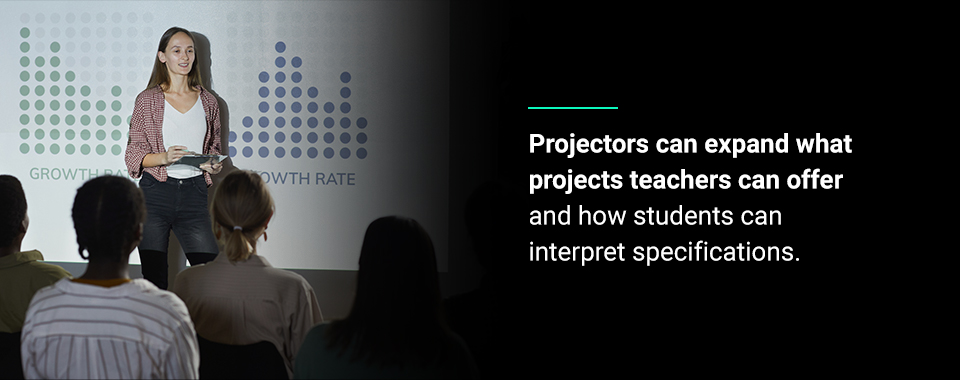
Many teachers assign presentations and projects to their students to help them apply what they’ve learned and show their knowledge of the subject matter. Projectors can expand what projects teachers can offer and how students can interpret specifications.
PowerPoints are effective visual aids to help guide students through presentations. They can remind them of speaking points and support their classmates’ understanding. Virtual and visual aids can reduce the amount of handouts students may need to provide for presentations. Many PowerPoint applications are easy to share, making them ideal for group projects where students can do their parts from home.
Students can also make video presentations. Whether they’re making an original film in a creative class or practicing speaking in a different language, videos offer another medium for students to show off their skills. Videos can be fun and engaging for the rest of the class, as well.
Technology makes it easy to relay information when plans change suddenly. If a teacher needs an unexpected substitute, they can easily share their lesson plan and materials with substitutes online. Instead of scanning papers or dropping worksheets off at school, teachers can email PowerPoint files or video links they wanted to share with the class that day.
From there, your substitute teachers only need to connect to the projector to start the lesson, making it an easy adjustment for them.
Projectors can offer increased applications within the classroom, but you can install them in other areas of your school, too. Many schools use them in their auditoriums to support speakers and assemblies. Pair the projector with a cordless remote to give your guest more control over their presentation.
Projectors are excellent devices for highlighting student accomplishments. You can use them at awards ceremonies and graduations to display each student’s name and achievements. This is a personal touch to significant events that will make them even more special.
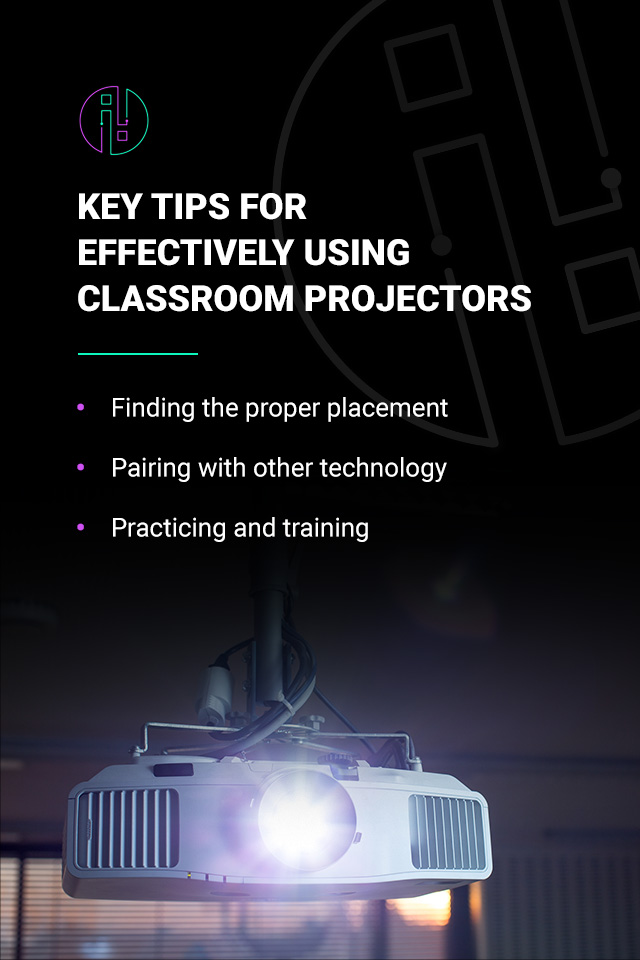
Implementing new technology into the classroom can be an adjustment for teachers. You can ease the transition through:
With these tricks, installing and using projectors and projector screens will become a breeze for teachers, students and guests alike.
In recent years, technology has become an integral part of classrooms everywhere. Equip your school’s classrooms with the best equipment to ensure your students get the best learning experience possible. When it’s time to invest in new classroom technology, you’ll want to match your teachers with a helpful, knowledgeable supplier. Working with an audio, video and lighting (AVL) company can help create the perfect solution for your school.
Illuminated Integration creates custom AVL solutions for various industries, including K-12 schools. Our projector installation services can match your school with suitable projector systems for your classrooms and teachers. We can work with any project size and complexity to bring you solutions tailored to your needs for seamless implementation and easy use.
Contact Illuminated Integration today to learn more about our projector installation services and discover how we can help you transform your schools and classrooms. We look forward to assisting your school!